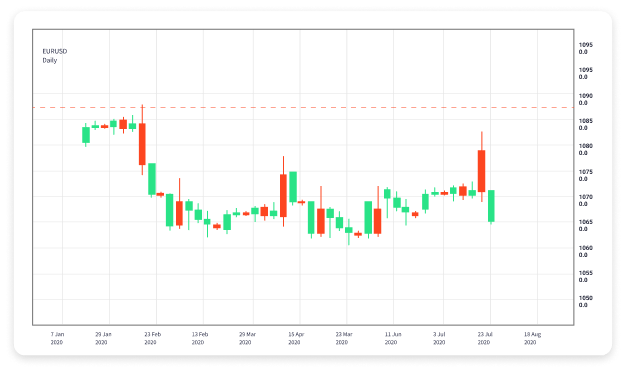
Understanding Forex Algorithmic Trading: Strategies and Tools
In the fast-paced world of foreign exchange, forex algorithmic trading Trading Asia has become a focal point for traders seeking to automate their strategies and leverage technology. Forex algorithmic trading, or algo-trading, has transformed traditional trading methods, providing traders with the tools they need to optimize their trades while minimizing emotional decision-making. This article delves into the fundamentals of forex algorithmic trading, exploring various strategies, the necessary tools, and best practices for traders looking to harness the power of automation.
What is Forex Algorithmic Trading?
Forex algorithmic trading refers to the use of computer algorithms to execute trades based on predefined criteria. These algorithms can analyze market data, identify trading opportunities, and execute orders faster than any human trader. The primary benefits of algorithmic trading include increased speed, accuracy, and the ability to process vast amounts of data quickly, which is crucial in the highly volatile forex market.
Key Components of Algorithmic Trading
Before engaging in algorithmic trading, it’s essential to understand its key components:
1. Trading Strategy
Your trading strategy forms the backbone of your algorithm. Strategies can be based on technical indicators, fundamental analysis, or a combination of both. A well-defined strategy outlines entry and exit points, risk management rules, and trade size. Common strategies include trend following, mean reversion, and breakout strategies.
2. Programming Language
Most algorithms are programmed using languages like Python, C++, or MQL4/5 (specific to MetaTrader platforms). Each language has its pros and cons, and the choice often depends on the trader’s familiarity, the complexity of the strategy, and the trading platform being used.
3. Backtesting
Backtesting is the process of evaluating your trading algorithm using historical data. This step is crucial in understanding how the strategy would have performed in the past under various market conditions. A good backtesting framework allows traders to simulate trades, analyze performance metrics, and refine their strategies before going live.
4. Trading Platform
Choosing the right trading platform is essential for implementing your algorithmic trading strategy. Popular platforms include MetaTrader 4/5, NinjaTrader, and cTrader, each with its unique features and capabilities for algorithmic trading.
Popular Algorithmic Trading Strategies
Different strategies can yield varying results depending on market conditions. Here are some popular algorithmic trading strategies in forex:
1. Trend Following
This strategy aims to capitalize on the momentum of price movements. Algorithms identify and follow trends, entering long positions during upward trends and short positions during downward trends. The key is to use indicators such as Moving Averages (MA) or the Average Directional Index (ADX) to determine trend strength.
2. Mean Reversion
This strategy is based on the idea that prices will revert to their mean or average over time. Traders use technical indicators like Bollinger Bands or the Relative Strength Index (RSI) to identify overbought or oversold conditions, placing trades that bet on price reversals.
3. Arbitrage
Arbitrage involves taking advantage of price discrepancies in different markets or instruments. Algorithmic trading can quickly identify these discrepancies and execute trades to profit from them before they vanish. This strategy often requires high-speed connections and low-latency execution to be profitable.
Risk Management in Algorithmic Trading
While algorithmic trading offers numerous advantages, it also comes with inherent risks. Effective risk management is vital for success.
1. Position Sizing
Determining the size of each trade is crucial to managing risk. Traders should develop algorithms that incorporate position sizing based on their account balance, risk tolerance, and market volatility.
2. Stop Loss and Take Profit Orders
Automated stop loss and take profit orders can help limit potential losses and secure profits. Implementing these orders within your algorithm ensures that trades close automatically when predefined conditions are met.
3. Diversification
Diversifying trading strategies and asset selection can help spread risk across different opportunities, reducing the impact of any single loss on the overall trading portfolio.
Tools for Algorithmic Trading
Several tools and platforms cater specifically to algorithmic trading, facilitating the development and implementation of trading algorithms:
1. Trading APIs
Many brokers offer Application Programming Interfaces (APIs) that allow traders to connect their algorithms directly to the trading platform. This connection facilitates order execution, data retrieval, and real-time market analysis.
2. Trading Bots
Trading bots are pre-built algorithms that can execute trades based on specific criteria. These can be a good starting point for novice traders or those unfamiliar with programming, as they often come with user-friendly interfaces.
3. Backtesting Software
Specialized software for backtesting trading strategies is widely available, helping traders simulate past performance and understand how their strategies would have performed in different market conditions.
Conclusion
Forex algorithmic trading represents a significant advancement in the trading landscape, providing traders with tools to optimize their strategies and make data-driven decisions. By understanding the components of algorithmic trading, popular strategies, and the importance of risk management, traders can harness technology to enhance their trading performance. As the market continues to evolve, staying informed about new tools and techniques will be crucial for success in the exciting world of forex trading.

